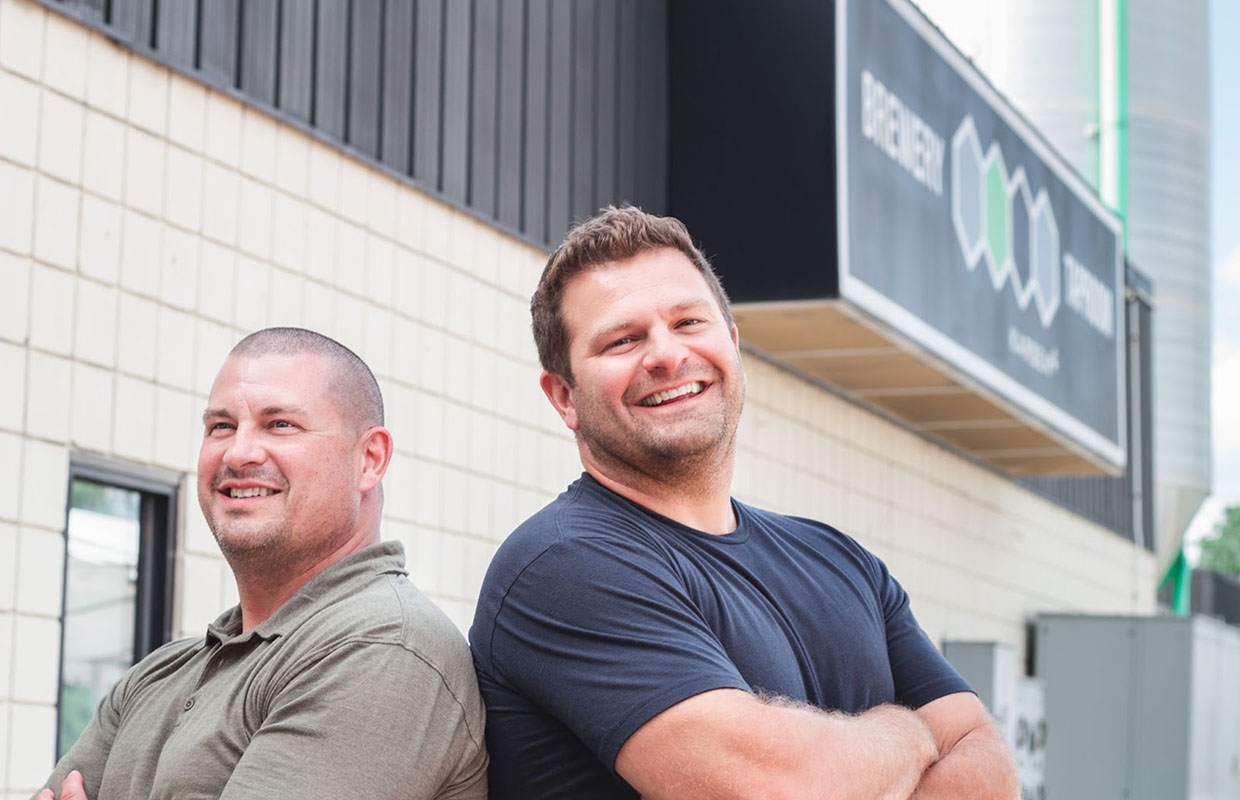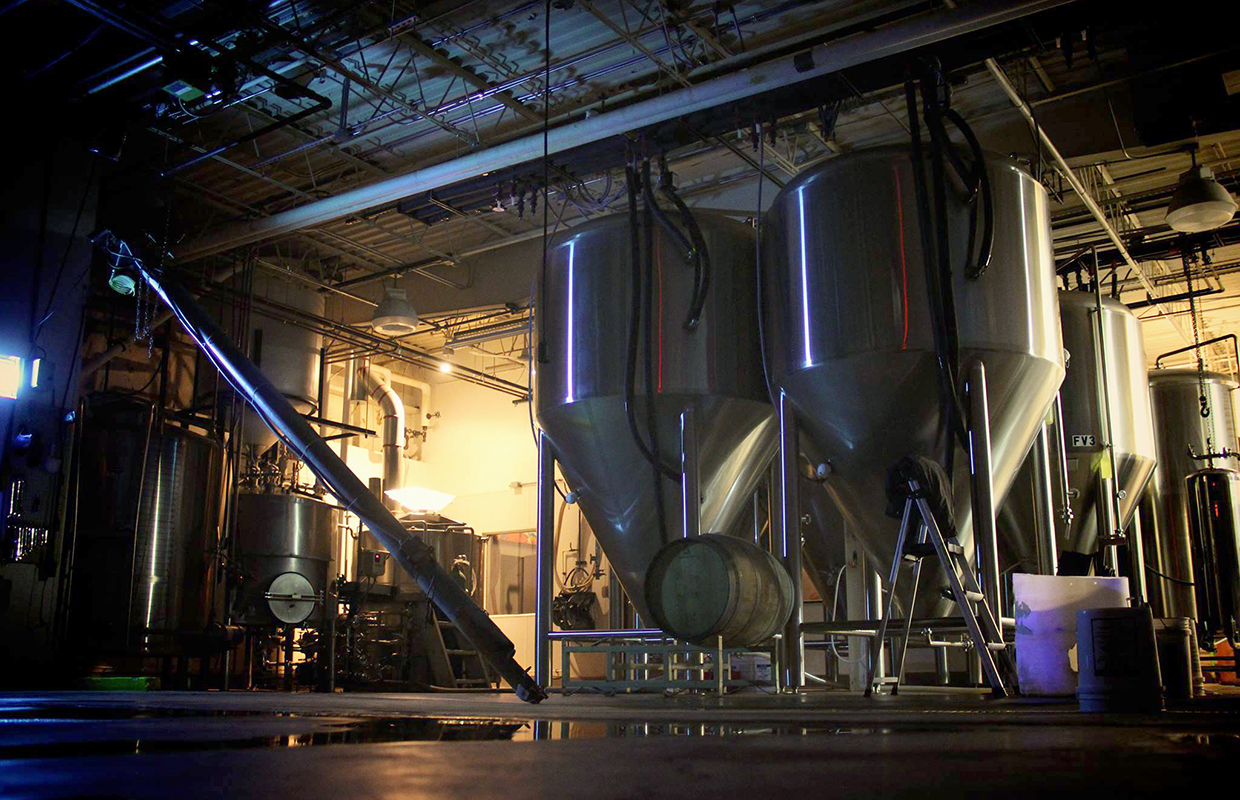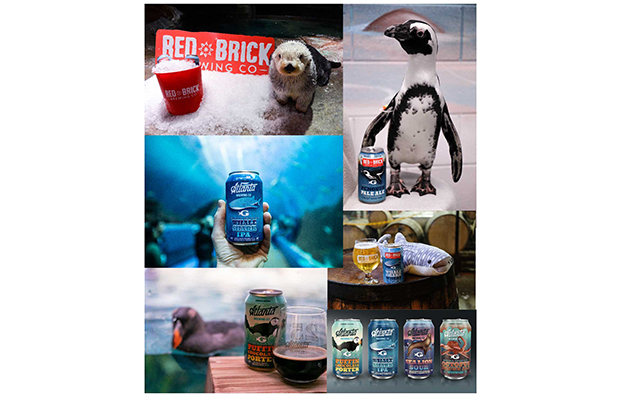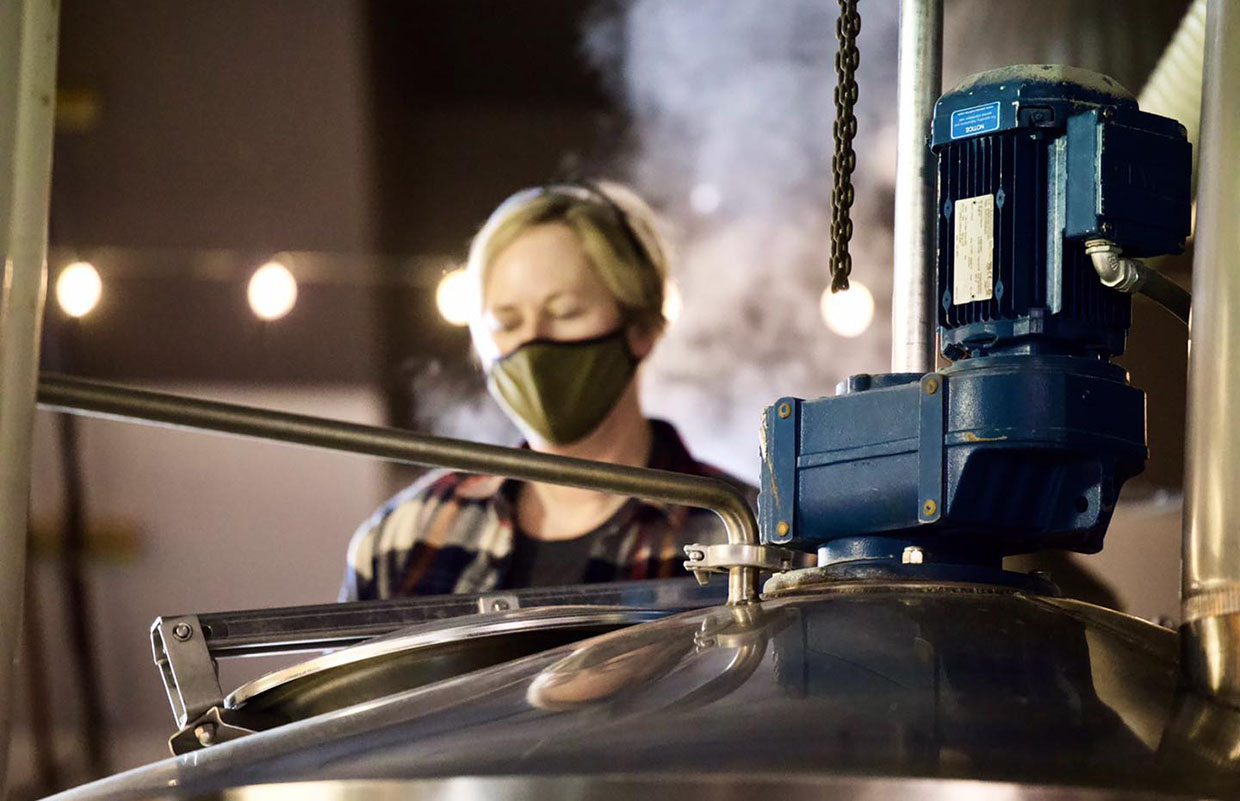
It’s been 10 years since Karben4 Brewing got its start in the building in which fellow Madison, Wisconsin craft beer producer Ale Asylum previously produced its beers.
With a decade under its belt, Karben4 is making moves with an eye on the future. It has doubled the capacity of its canning line and plans to double its brewhouse capacity this year.
Those would be noteworthy growth-oriented moves on their own, but Karben4 isn’t stopping there.
Ale Asylum closed its doors in 2022, but Karben4 co-owners Zak and Ryan Koga acquired the brand and are now producing those beers in its original facility.
The move checked several boxes for the Kogas: It’s community-focused, it’s a good public relations move, it’s a natural fit for a brewery that already produces beers for other breweries and it’s an opportunity to pull in an audience it didn’t previously have.
Hopalicious will be the first of several Ale Asylum beers making its way back to the public. It was relaunched during a “Hopalicious Comes Home” event on March 22, where Ale Asylum fans celebrated its return and entered a raffle to win free Hopalicious for a year.
Distribution of Hopalicious began in the Madison area immediately after the launch. It and other Ale Asylum beers will be distributed throughout Wisconsin this year.
“With Hopalicious being such a core foundational flagship craft beer for Madison, we felt like it had to live on,” Zak Koga told Brewer Magazine. “It’s the best move for our business. This is beer people here like drinking, and we wanted to keep it alive for those people. It seemed like the right thing to do. It’s a good Madison story about saving a Madison company and keeping it alive in our hearts. Beer is a personal experience and we thought we could be good stewards by honoring a 16-year-old brand and giving it a second life.”
Zak said the move would not diminish Karben4’s focus on its original lineup and brand, although the new beers are being served in Karben4’s taproom.
“They’re separate,” he said. “They’ve got their own branding, their own distribution, and their own labeling. There’s a different approach to the beers themselves. Clearly, there’s synergy with them being made at the same place but they’re going to remain separate.”
There was a clear case to be made for the move from a business standpoint. For instance, it ensures that the capital investments made in the canning line and brewhouse capacity immediately go to work generating revenue for the 10-year-old company.
“It’s about economies of scale,” Zak said. “We have to be careful to match the facility with the output. We own an NA brand that we do the same way. We’re making these brands on contract at K4 but we own the brands, so we’re kind of guaranteeing ourselves that we’ll be our own biggest customers because we’re our own top two customers there beyond our Karben4 beers.”
He added that they were not shifting focus away from their Karben4 beers and believed producing Ale Asylum beers could help them gain exposure to a larger audience and raise more capital to sustain their business.
“We’re making the best beer we ever have with the best packaging and we’re working really hard to create opportunities for K4, but we need to do things that help the health and sustainability of the business,” Zak said. “We’re finding additional opportunities for growth so that we don’t put unnecessary pressure on any of our beer brands.”
He said he believed the move was great exposure for both Karben4 and Ale Asylum.
“We’ve got customers and fan base that overlap, but also customers who know one brand but not the other,” he said.
Karben4’s latest brewing endeavor is made easier by a couple of things. For one, they have Ale Asylum’s former equipment, and the recipes are calibrated for that equipment, Ryan Koga said.
“Because Ale Asylum started in the same facility and was made in the same brewhouse, the recipes were already optimized for this place, so we’re ahead of the curve there,” Ryan said. “But every year is different, the hops are different, so modifying and optimizing new brands with heritage to them you have to select hops that do best for Hopalicious or Ale Asylums other beers. While I might select stuff for K4 that I like, I have to learn a whole new palate and profiles.”






Be the first to comment